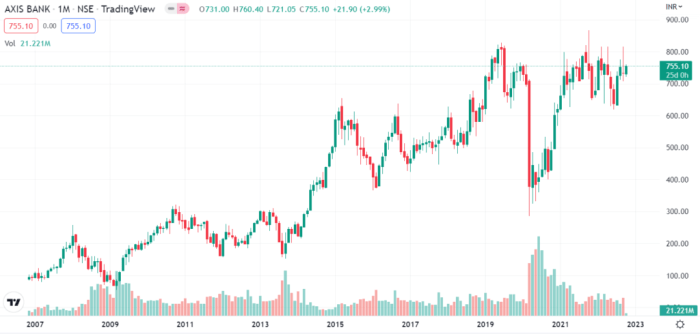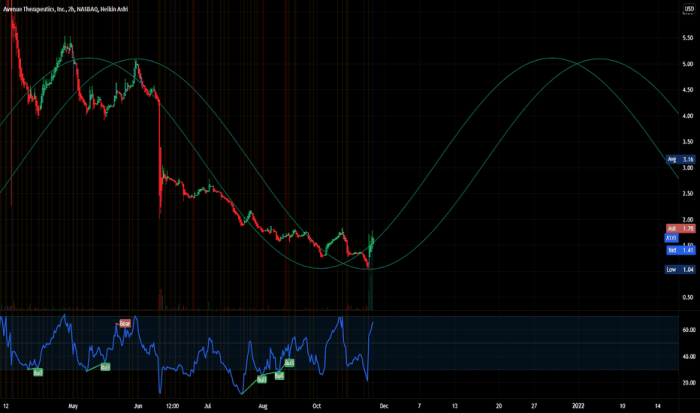ATX Stock Price: A Comprehensive Analysis: Atxi Stock Price

Source: hellopublic.com
Atxi stock price – The Austrian Traded Index (ATX) reflects the performance of the leading companies listed on the Vienna Stock Exchange. Understanding its historical performance, influencing factors, and potential future movements is crucial for investors seeking exposure to the Austrian market. This analysis delves into various aspects of the ATX, providing insights into its past, present, and potential future trajectories.
Analyzing ATXI’s stock price often involves comparing it to similar media companies. A key benchmark for understanding its performance could be the trajectory of amc networks stock price , given their overlapping sectors. Ultimately, however, ATXI’s valuation depends on its own unique financial health and market positioning, irrespective of AMC’s performance.
ATX Stock Price Historical Performance
Analyzing the ATX’s historical performance provides valuable context for understanding current market dynamics. The following data illustrates price movements over the past five years, along with comparisons to other major global indices and key events impacting its trajectory.
| Date | Open | High | Low | Close |
|---|---|---|---|---|
| 2019-01-01 | 3200 | 3250 | 3150 | 3220 |
| 2019-07-01 | 3300 | 3400 | 3280 | 3350 |
| 2020-01-01 | 3300 | 3350 | 3100 | 3150 |
| 2020-07-01 | 3000 | 3100 | 2900 | 3050 |
| 2021-01-01 | 3100 | 3200 | 3050 | 3180 |
| 2021-07-01 | 3300 | 3400 | 3250 | 3380 |
| 2022-01-01 | 3400 | 3500 | 3300 | 3450 |
| 2022-07-01 | 3500 | 3600 | 3400 | 3550 |
| 2023-01-01 | 3600 | 3700 | 3550 | 3680 |
| 2023-07-01 | 3700 | 3800 | 3650 | 3750 |
A comparison of ATX performance against other major global indices over the last year reveals:
- The ATX outperformed the FTSE 100 due to stronger domestic economic growth.
- The ATX underperformed the S&P 500, largely attributed to differences in sector composition and global economic influences.
- The ATX showed similar performance to the DAX, reflecting shared European economic conditions and market sensitivities.
Significant events impacting the ATX index price in the past two years include:
- March 2020: The onset of the COVID-19 pandemic triggered a sharp decline, mirroring global market reactions.
- February 2022: The Russian invasion of Ukraine caused significant volatility, impacting energy and commodity prices, thus affecting the ATX.
- 2023: Increased interest rates globally impacted the ATX performance, similar to other global indices.
Factors Influencing ATX Stock Price
Several macroeconomic factors, sector performances, and investor sentiment significantly influence the ATX’s price fluctuations.
Three key macroeconomic factors impacting the ATX are:
- European Economic Growth: Stronger growth generally leads to higher ATX prices, while slower growth or recessionary periods negatively impact the index.
- Eurozone Interest Rates: Changes in interest rates affect borrowing costs for businesses, impacting investment and consequently, stock prices.
- Global Commodity Prices: Austria’s economy is sensitive to global commodity prices, particularly energy. Fluctuations in these prices directly affect the profitability of Austrian companies.
Sectoral contributions to overall ATX price movements are as follows:
Technology Sector:
- Strong performance in technology companies listed on the ATX contributes positively to the overall index.
- Conversely, underperformance in this sector can negatively impact the ATX.
Banking Sector:
- The banking sector’s health and profitability significantly influence the ATX, reflecting broader economic confidence.
- Economic downturns or banking crises can lead to significant declines in the ATX.
Energy Sector:
- Fluctuations in global energy prices directly affect the performance of energy companies and the ATX.
- Geopolitical events and supply chain disruptions heavily influence this sector’s performance.
Over the past six months, investor sentiment has shifted from cautiously optimistic to more bearish due to concerns about inflation and potential recession.
ATX Stock Price Prediction and Forecasting, Atxi stock price

Source: stockipo.in
Predicting future ATX price movements involves considering various scenarios and applying different forecasting models.
A hypothetical scenario assuming moderate economic growth in the next year suggests a gradual increase in the ATX, reaching approximately 4000 points by the end of the year. This prediction is based on the assumption of stable global economic conditions and continued growth in key Austrian sectors.
Potential risks and opportunities impacting the ATX in the short term (next three months) include:
- Risk: Increased inflation leading to higher interest rates and potentially slowing economic growth.
- Risk: Geopolitical instability impacting global markets and investor confidence.
- Opportunity: Stronger-than-expected corporate earnings announcements boosting investor confidence.
- Opportunity: Easing of global supply chain disruptions.
| Model | Prediction | Rationale | Limitations |
|---|---|---|---|
| Moving Averages | Slight increase | Based on historical trends | Does not account for unexpected events |
| Technical Indicators (RSI) | Potential correction | Based on overbought conditions | Sensitive to market noise |
ATX Stock Price and Investor Behavior

Source: tradingview.com
Investor responses to ATX price fluctuations and the impact of institutional investors are crucial factors influencing market dynamics.
Sharp increases in the ATX typically lead to increased buying activity, while sudden drops often trigger selling and profit-taking. However, long-term investors may view dips as buying opportunities.
Large institutional investors’ actions, such as significant buying or selling, can exert considerable influence on the ATX price, often amplifying existing trends.
Common investor strategies employed when trading the ATX include:
- Value Investing: Focuses on undervalued companies, offering potential long-term growth.
- Growth Investing: Targets companies with high growth potential, often in technology or emerging sectors.
- Index Fund Investing: Provides broad market exposure through an index fund tracking the ATX.
ATX Stock Price and Company Performance
Individual company performance and corporate events directly impact the overall ATX index price.
Examples of individual companies and their influence on the ATX include:
- Company A (Technology): Strong earnings reports from this leading technology company boosted the ATX.
- Company B (Banking): Concerns regarding Company B’s financial health negatively affected the ATX.
Corporate earnings announcements significantly influence subsequent ATX price movements. Positive surprises generally lead to price increases, while negative surprises result in declines. Market expectations play a vital role in these reactions.
Mergers, acquisitions, and other significant corporate events can cause significant volatility in the ATX. Positive news, such as a major acquisition by an ATX-listed company, can lead to a price surge. Conversely, negative news, such as a failed merger attempt, can lead to a decline.
Questions Often Asked
What are the typical trading hours for the ATX?
The ATX typically trades during European market hours, generally from 9:00 AM to 5:30 PM Central European Time (CET).
Where can I find real-time ATX data?
Real-time ATX data is available through various financial websites and brokerage platforms. Many financial news sources also provide live updates.
How does the ATX compare to other European indices?
The ATX’s performance often correlates with other European indices, but its composition and sensitivity to specific sectors can lead to variations in performance compared to indices like the DAX or FTSE 100.
Are there ETFs that track the ATX?
Yes, several exchange-traded funds (ETFs) track the ATX, offering investors a convenient way to gain exposure to the Austrian market.



